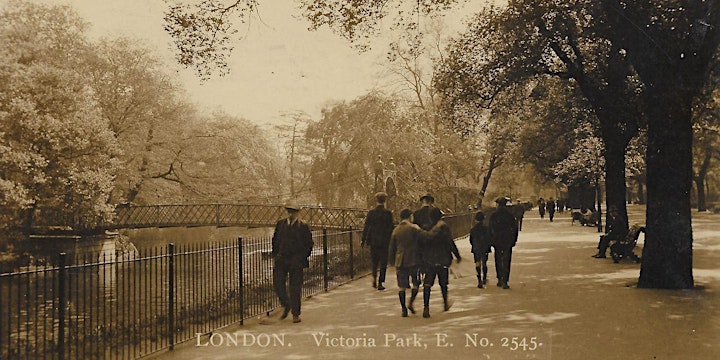People’s Parks are one of the finest legacies of the Victorian age. Designed and bequeathed to the masses as part of a movement encouraging green spaces and recreation, the public park came to symbolize one of the greatest contributions of the era.
Opened in increasing numbers in the industrious nineteenth century, by the end of the twentieth century many of our parks had become sadly neglected. But today they remain outdoor places for everyone to enjoy, acting as children’s play areas, sports grounds and even concert venues and have grown in popularity since the global pandemic. But what do we really know about them? The Gardens Trust is sponsoring a series of six weekly online lectures with Paul Rabbits on Wednesdays from April 17 – May 22.
Buy a ticket is for the entire course of 6 sessions. or you may purchase a ticket for individual sessions, costing £8. [Gardens Trust members may purchase tickets at £31.50 for the series or £6 each talk]. https://www.eventbrite.co.uk/e/peoples-parks-tickets-852833737667
Attendees will be sent a Zoom link 2 days (and again a few hours) prior to the start of the first talk (If you do not receive this link please contact us), and a link to the recorded session will be sent shortly after each session and will be available for 1 week.
The first lecture on April 17 really is a fascinating insight into the history of one of our greatest ever institutions – the Great British Public Park – People’s Parks. We have perhaps all enjoyed them at some time in our lives but what do we really know about them? their origins? did they really start in the Victorian period or do they go back even further? This talk illustrates their origins, the need for parks, their Victorian heyday, what makes a great park, with examples of lodges, lakes, bandstands, fountains and floral displays, to their great decline in the sixties and seventies. However, the subsequent revival has led to a major shift in interest in our parks and once again we are much in love with them. This is also a highly illustrative talk accompanied by slides with examples of parks from across the UK and their designs and architecture. This is a particularly popular talk and always goes down well as we can nearly always recount our own experiences with our own local park.This first session will follow the blossoming of the amazing 2,000-year-old story of why we have gardens at all. This is a fascinating tale of how they grew in the Roman world to become so much more than a productive space by a house. As the Empire expanded and the ordinary people aspired to have show-off homes, the gardens rapidly became a work of art in themselves. Now, for the first time in history, they became the personal creative spaces we know and love today. You’ll be astonished at how much the Romans have shaped our modern gardens today: from practical suppliers of food to homely open spaces and grand vistas and landscapes. They all have fascinating ancient roots that reveal how gardens came to be our own social, spiritual and physical spaces. Greenery, space, status, pleasure and fun, places of togetherness and of meditative solitude … all these aspects have truly ancient roots.

